In the beginning...
Because I am somewhat of a veteran at this stage in Fab Academy, I have come to understand my shortcomings towards supply side versus demand side of completing my projects. This cycle, I have decided to keep my website PLAIN AND SIMPLE, ergo I chose to use a simple template from Free CSS Templates. In earlier attempts with previous websites, I was either still learning and didn't have enough (at least for my standards) or I became very ambitious, researched a lot and had a solid foundation of information to format my website and then had so much going on inmy head that I couldn't decided and eventually made things complicated for myself. In choosing to do a website that has "bare bones" of a template, I have the information that I need and I slowly becoming satisfied with the work that I am doing so far.
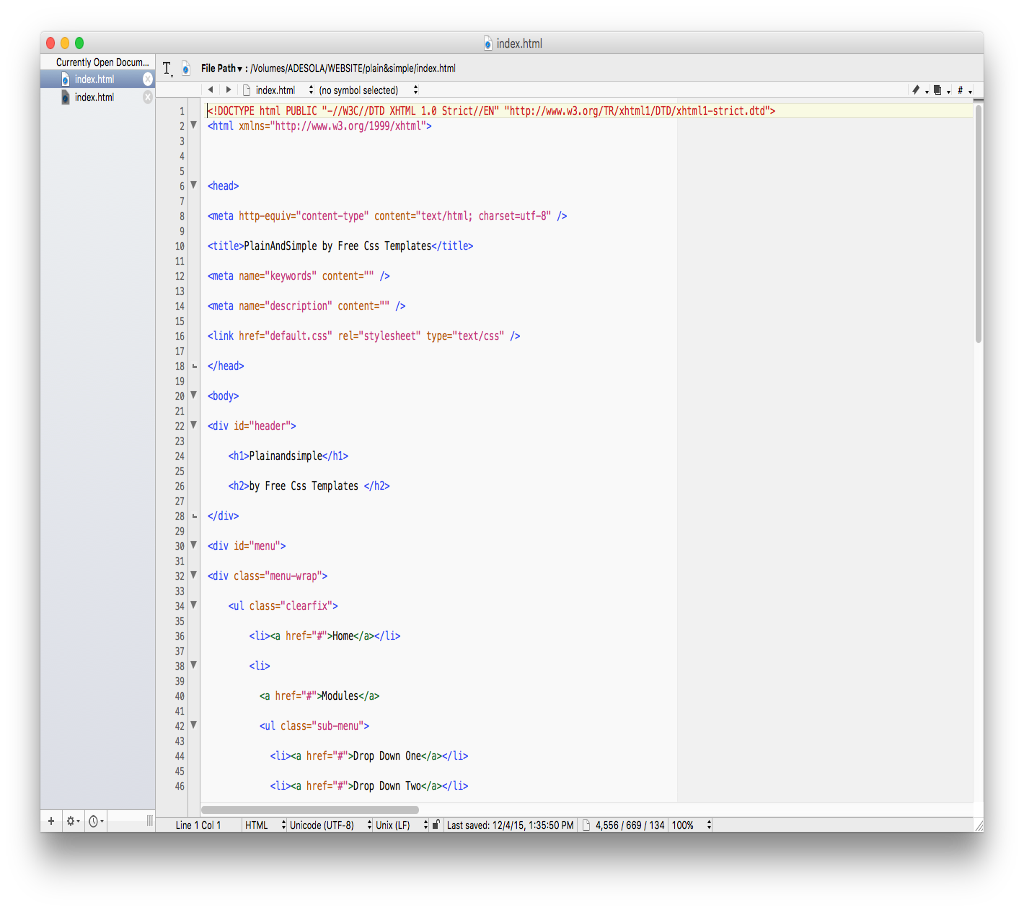
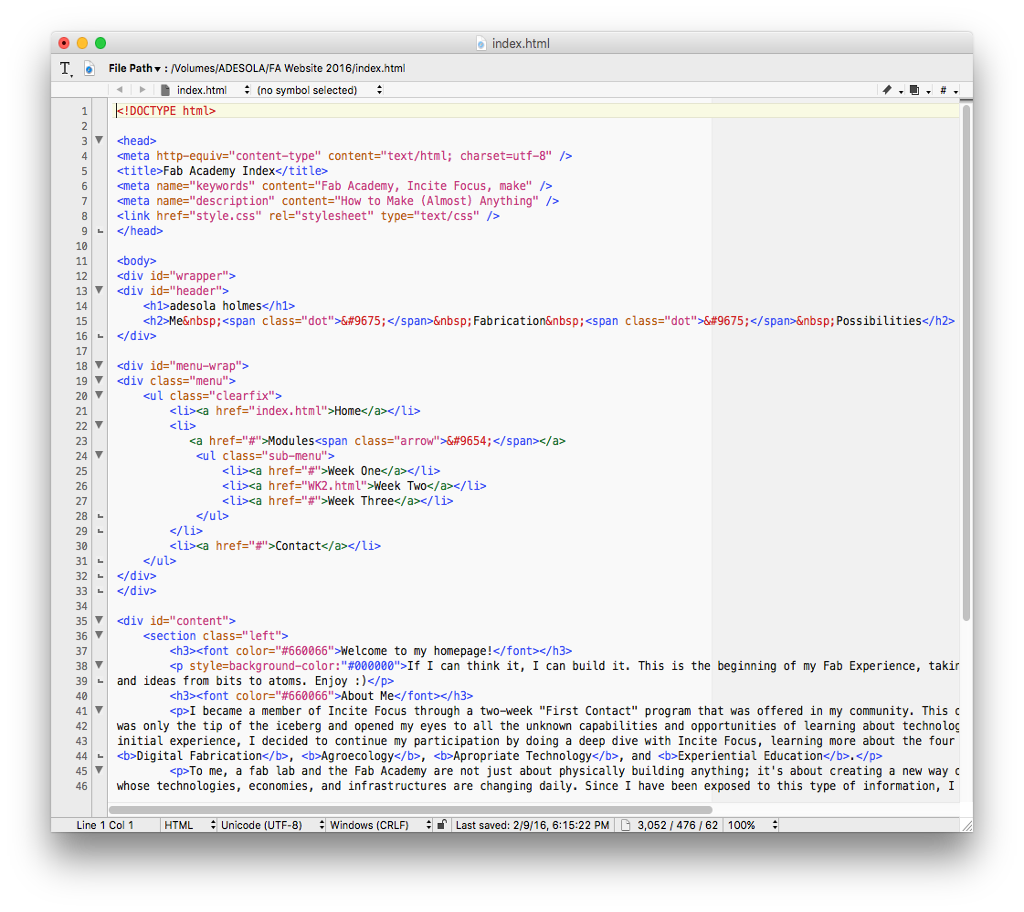
old and new index

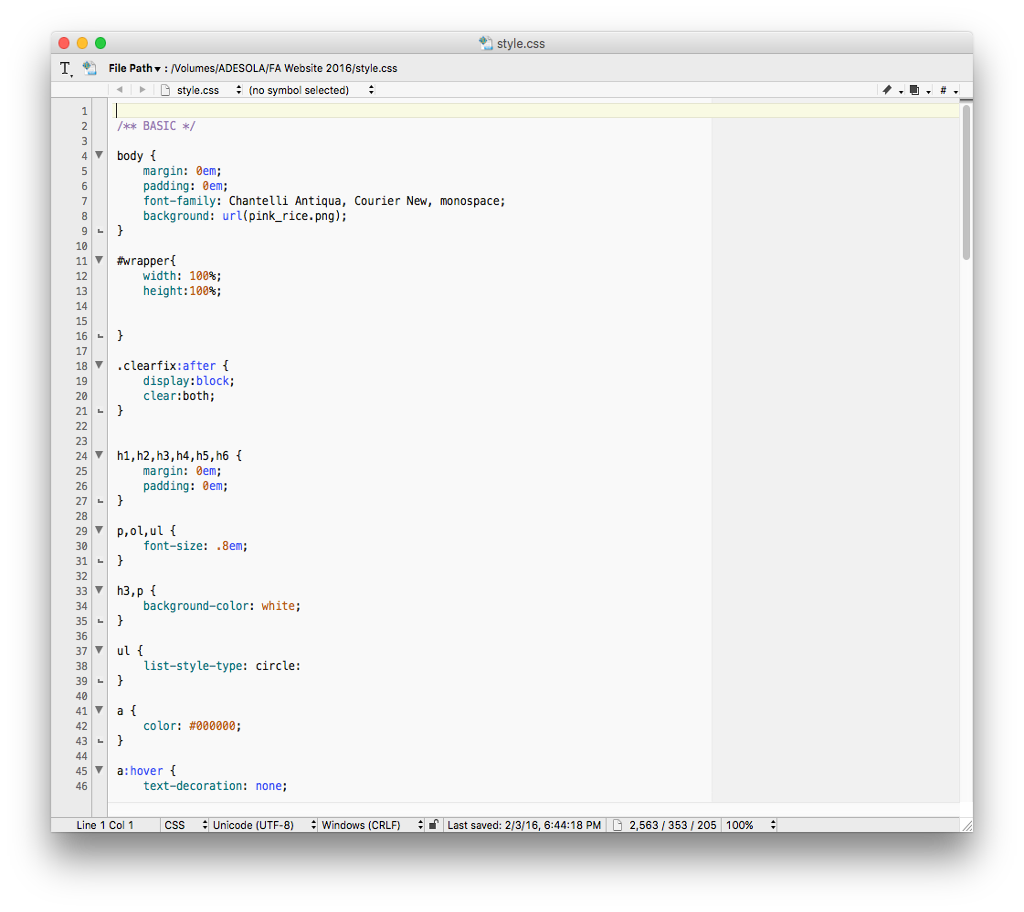
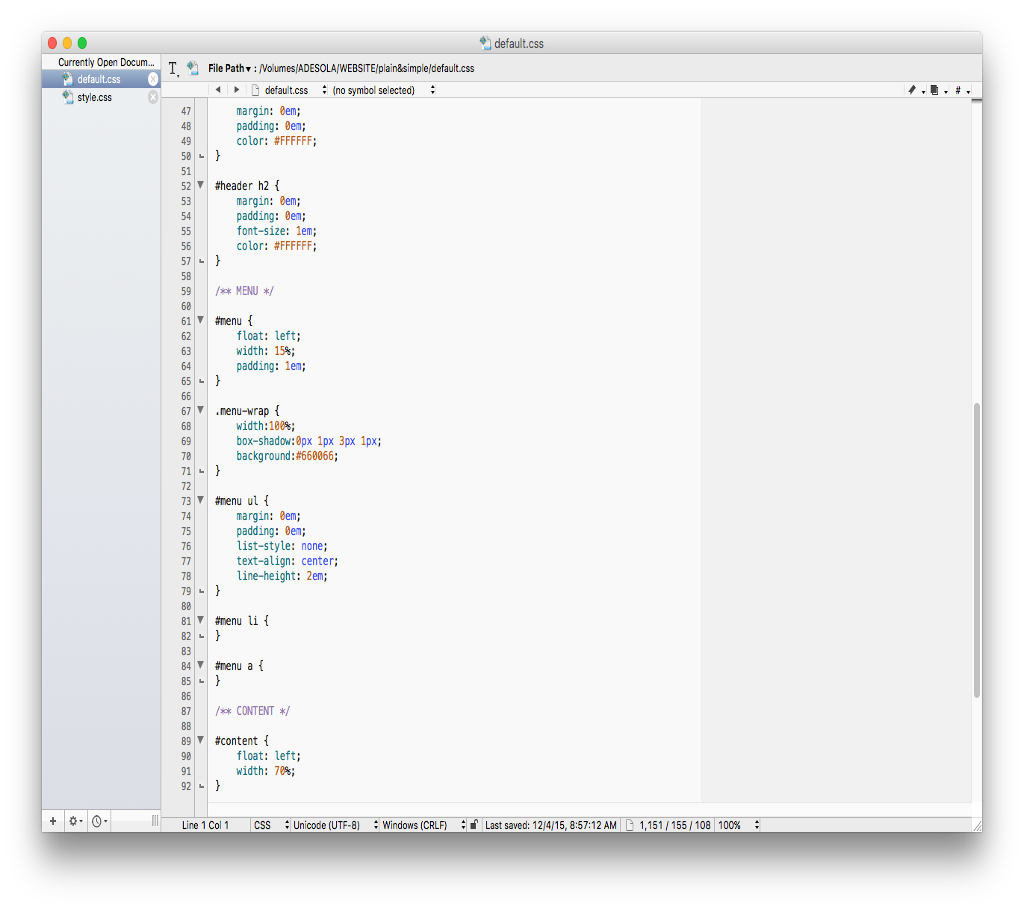
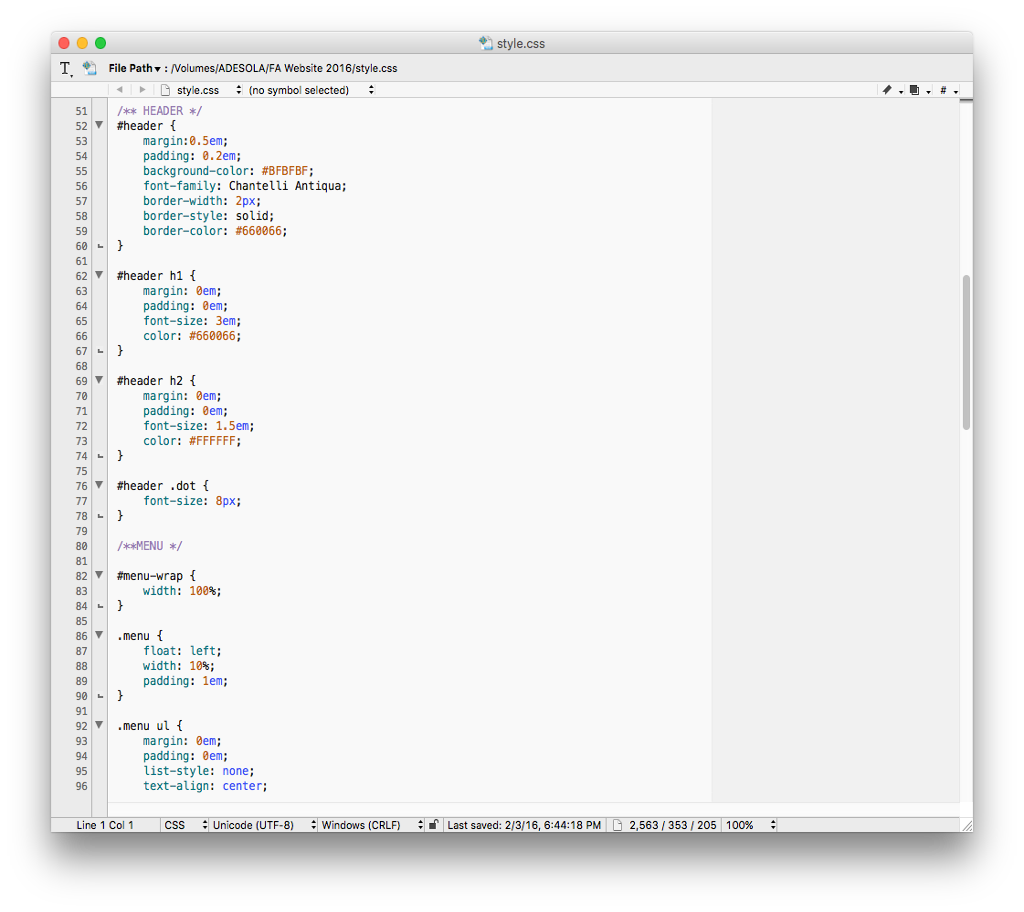
old and new css style pages
NOTE TO SELF (and future students): always check the size of your image files. I say this because I always thought that by notating the size of my images on the html pages themselves annotated what the size of the files would be. WRONG!! While I was pushing my repository, I was informed that I needed to make sure my images were of a certain size... they were not. So I took each individual file and opened them in GIMP and resized to where I knew each would be adequately proportioned. From the lecture I know that each file can be no larger than one or two megabytes. Converting from pixels to megs are not my forte. So I googled "pixels to megabyte conversion". The best explanation that helped me was:
- an 8-bit picture (or 256 color) equals 1,048,576 or 1024 by 1024 in one megabyte
This is the best advice so far, and I recommend everyone else to use this as well.
Within my time as a Fab Academy student, I have encountered numerous websites (recommended as well as researched) that have contributed tips and tricks for developing the type of website that I would be proud to display. Some such resources I would recommend are:
Version Control Operations
This year for our repository organization, we are utilizing GIT. Before pulling and pushing into your repo, it is best to research anf find a tutorial that best fits your understanding of how to use it. I found this site quite helpful. once I got a small idea for how to utilize the repository, our lab went through a walk through together. Steps for adding to your repo are as follows:
- Navigate to your terminal
- From there navigate to the (your or my) student folder
- add any files, images, html pages to your student folder-- I plan to keep my pages on an external harddrive and just moved them every week
- git status: shows what pages that were add to your git folder
- git add
- with individual files you will just put the name (i.e. index.html, etc)
- multiple files, use -A
- git commit -m and a personal message
- git push
IMPORTANT NOTE: in between git add and git commit, do another git status. Files in red are not ready to be commited; files in green are ready to be committed. After that you are all set!
For my final project...
What are my plans for this semester?
Incite Focus' core mission is to "create new options for people who are looking to live within limits (but not poorly) and who want t have time for high quality life experiences". Permaculture is one of the four significant areas that our program encorporates when teaching our students or interacting with members of the community. Permaculture (also known as permanent agriculture or culture) is the development of productive ecosystems with cooperative and economical social systems, addressing the way we live with respect to Earth, its inhabitants and leaving the biosphere in a more productive state than when we inherited it.
Center to our agroecology program, we have a Greenhouse housing an Aquaponics Facility. In previous years, the system was up and running accomodating over 2000 tilapia. Along with great opportunity came discomfort and learned lessons. In order to man the upkeep of the hoophouse without complication, extensive manual labor was necessary. Summer months brought great weather to garden, numerous insects, and exponential growth of fish and good crops. Winter months brought colder temperatures, as well as the difficulties of maintaining warm water temperatures, levels and weather interferences.
How can this be applied?
In general, the practice of creating systems in order to cultivate food and crop is not a relatively new idea. There are various places known and unknown that utilize these methods in differing ways. For any individual person, family, or business that choose to eat healthy alternatives, work or live in a different way, but may not be able to allocate 100% of their time to its success, this idea is for them.

Success in the hoophouse from previous years
Considering the roller coaster of experiences I've encountered, the idea of creating an automated fish feeder was developed.
My potential plan is to create and build an automated fish feeder that will be eventually used and incorporated into the Incite Focus Aquaponics System. Essentially, the idea of the machine is to replace the manual laboring time-consuming responsibility of feeding the fish. I would like for it to operate on a timed schedule (i.e every few hours, days, etc) depending on the growth of the fish and environment settings. The machine will operate with a stepper motor dispensing the food. Below is a very rough sketch of potential design aesthetic ideas that I have thought about incorporating moving forward.
